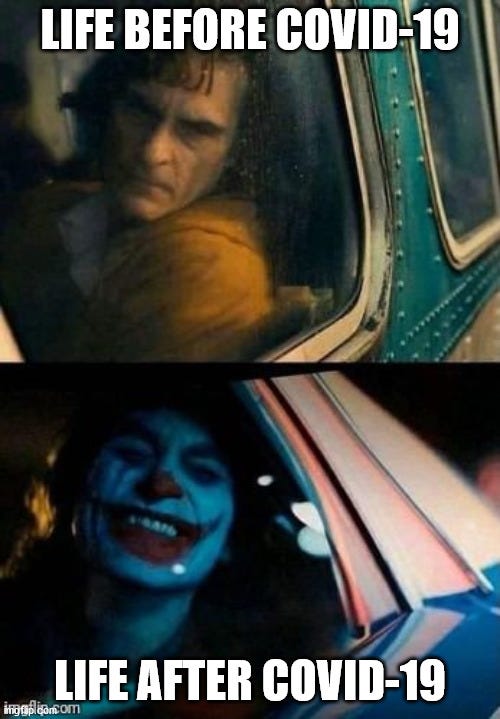I wanted to live traveling, but I also love comfort, so I got into IT, to be able to travel earning relatively well and without too much hassle. I studied, made a career transition, minimally established myself to take flights, then came covid. No travel. How many plans we have changed because of the pandemic, right?
Before that, I taught yoga and even traveled a lot doing this, it was cool. Today I’m going to tell stories about traveling yogis, but nobody I know, but the story of the first nomadic yoga teachers in the United States.
They lived 100 years ago, also had to adapt life plans due to greater forces and totally changed careers to make some change.

They were just Indian traders and students living normally in the USA, when Uncle Sam’s jurists raised an issue that changed everything:
Are people from Asia, black or white?
Since only white people could have American citizenship, overnight, these neither-black-nor-white Indians lost all rights in the country.
Worse, to become American it was necessary to give up the previous citizenship then, when this happened, they no longer had Indian nationality.
On paper, they were stateless people.
It was between the Johnson-Reed Act of 1924 and the liberal reforms of the Hart-Celler Act of 1965, that our modern yoga messengers were born.
Traveling teaching yoga
The solution was to move between states until politics took concrete form and some settled on yoga as a profession. The problem is that the legal impasse lasted for a few years and the curious thing is that none of them had taught yoga before.
For example, below you see a news story about a famous entrepreneur in the tea import business for American housewives.
On the right, the same man, after the denaturalization process, started to advertise yoga classes, prana, vibrations and occultism:
philosopher, teacher, a kind of guru.

It might seem like a completely nonsensical and irrelevant story, but these guys were indispensable for yoga to become the international practice it is today.
Nobody knew what yoga was
At that time, if you asked someone what “yoga” was, chances are the person had never even heard that word. How did these guys think it was a good idea to survive by selling this?
There was already a conversation between different cultures and religions in the United States:
- I told the other day about when Vivekananda went to the World Parliament of Religions in Chicago in 1893 – he wanted to disseminate Hindu knowledge and for this, he created the Vedanta Society, teaching Raja Yoga in “western” language.
- The Theosophical Society was also on the rise, founded in New York in 1875 with the purpose of bringing people together in the comparative study of philosophies and sciences.
Our story today begins in the 1920s, that is, the market for Mystical Societies was already consolidated.
Courses were popular on universal energy, positive thinking, manipulating the power of the mind, obtaining healing, happiness, or money. Nothing too strange, we still have the “pro-life” and other similar groups that teach these things that author Catherine Albanese coins as American metaphysical religion.

Taking advantage of the hype, our businessmen went out teaching yoga concepts with this American metaphysics – they were merchants, so they used top-notch marketing, mixed logos and impact phrases, a super rebranding.
Sales Tactics
There was no way to do ads, filter target audience, or upload ebook on hotmart, to reach people the scheme was to advertise in the largest medium of communication: the newspaper.
The academic Philip Deslippe delved into piles and piles of newspapers to know where these nomadic yogis passed and what they taught. He ventured into the collections of the whole country, read hundreds of ads and organized all to find patterns among the classes.

Phillip discovered that these neo yogis were doing clickbait to get people to come to their courses: they promised solutions to loneliness, happy marriages, or gave theoretical classes on how Jesus had been a yogi in India.
The professors used more or less the same tactics: they would arrive in a new city where they would stay for weeks or months, find hotels, rent lobbies or auditoriums, and promote their classes in newspapers.

There was no Instagram advertising, but the prospecting method was similar to what we have today: open live streams to reach as many people as possible and closed mentoring for those who want to know more.
They would give 3-4 free public lectures to attract the curious and from there, with luck, a small group of more interested students would enter the paid groups which cost between 100-120 dollars per class, usually the students were middle or upper class.

Phillip argues that it was thanks to these itinerant men who changed their personas and styles with each state they passed through, that yoga became popular.
The teachers knew each other personally or at a distance and openly shared or secretly stole teaching materials, students, and other resources as they marketed themselves to the American metaphysical public – it was the “only” means of subsistence and profession.
Yoga and occultism
Philosophy, meditation, psychology, self-improvement… Yoga has always walked this tightrope, between pragmatism and occultism, it is important to point out here that the bias of mystical yoga has always existed and that we have other modern cases, it was not a novelty of the nomadic teachers, we have as an example the emblematic Alex Crowley:
The British writer, poet, mage, and philosopher published in 1939 “Eight Lectures on Yoga” where he talks about postures (asanas), breathing techniques (pranayama) and meditation, but also puts his infamous magical theory in the middle.
At first people were afraid of these groups and theories, there were rumors that women went crazy and left their families to follow the gurus/swamis.
Over time the discourse changed, they sold it as an ancient knowledge that was brought to help the Americans. One who used this more modern tactic a lot was one of the most famous itinerant teachers and perhaps the first posture teacher in the West, Rish Singh Gerwal.
Yoga and physical postures
Gerwal was keeping an eye on the trends in India, there was all that movement of conversation between yoga and bodybuilding which I mentioned the other day.
One of the big names there was Kuvalayanada, from whom Gerwal shamelessly copies the books, publishes them in his name and tells private students that he learned everything in the Himalayas.
the famous book Yoga Mimansa of Kuvalayananda

Already in the 1930s, at the end of the second war, the cult of the body in general increases, yoga follows this trend and Gerwal has been surfing this wave for a long time, he creates “yoga teacher trainings”, encouraged students to travel and disseminate hatha yoga in the world.
A second wave of nomadic teachers emerges, now with a completely different proposal and needs, the masters encouraged the students to go to India, to get certificates… the organization increases.

Here, under a new guise, history repeats itself, and this fascinates me a lot. I’ll be back to tell more in future editions, both about the globalized postural yoga of the last 50 years, and about the medieval one from hundreds of years ago. If you want to continue navigating through yogas of different times and have fun with coincidences, stay.
Closing
After 4 years, I will return to the plan of traveling while working, working while traveling. I’m getting things ready, but if before the plan was only one way, today it’s not quite like that – I renovated, set up my little corner, times have changed, I have aged. I still want to travel, but having a place to return to now seems more inviting than before.
Existence is like that, isn’t it. Significant events renew our way of seeing the world, we discover different things, we combine them with what we already had, we create something new, more or less as it was before, only different.
When I went to India, I constantly tried to understand the difference and similarity between things so exotic for me in that whole cultural shock, and more often than I would like people would shake their heads in that Indian way and respond
“same, same, but different“.
I find this answer perfect for whether “yoga is this or that”. I have no pretension to clarify anything here in the “mystic healing ritual“, but I want to bring interesting stories that blend spirituality from a more general aspect of the world – between politics, music, movies…
I love this story of the Swami Circuit (the name that Phillip gives to this group of nomadic teachers) because it brings a dimension that yoga is inserted in a larger reality – sometimes governed by racist politics, for example – it also reminds me that everyone at some point, even 100 years ago, seeks miraculous ways to solve things, to the point of indulging in ridiculous things, which yield good stories later, at least.
In addition, note that no suburban American knew very well what yoga was, people accepted anything and a groundwork of misinformation was done that still persists – not only persists, it is our new reality: yoga in 2024 is indeed a mix of American metaphysics, with 20’s bodybuilding and also medieval Indian philosophy.

Yoga has always been a vibrant thing, and I dare say that photographs on social networks and other more recent elements have also shaped this practice. With time, we will be able to understand it better, from afar.
For now, today’s text was just about the beginning of global yoga.
I think it’s cool for us to identify that the marketing of current spiritual practices is so similar to that of the past. Hopefully, I can save someone from spending a fortune on magical cures that – I also wished they worked as advertised!!! – are a rip-off, at best a good experience to meet people who are in the same boat as you.
Moreover, be aware of secretive groups or teachers who deliberately and covertly assume the disguise of a moralistic yogi to make money – that thing, every day a fool and a smart person leave home. The guy may not even do it out of malice, but who knows.
And just to finish, if you’ve made it this far, it’s worth spreading the end of romantic yoga (since the topic out there is romantic love kk), which considers more traditional and true that passed by pure Indians – in other words, marketing with assumptions about race, religious ancestry, geographic origins, and artificially sharp distinctions between the East and the West.
If you enjoyed the conversation and want to see some old newspaper ads, take a read at one of Phillip’s articles!
See you later 🙂

Comments
One response to “The beginning of globalized yoga”
[…] may seem like a bunch of random techniques with a weird name that anyone can put together and teach a class, but, surprisingly, there is a theory. It’s just not easy to find on Google, but it […]